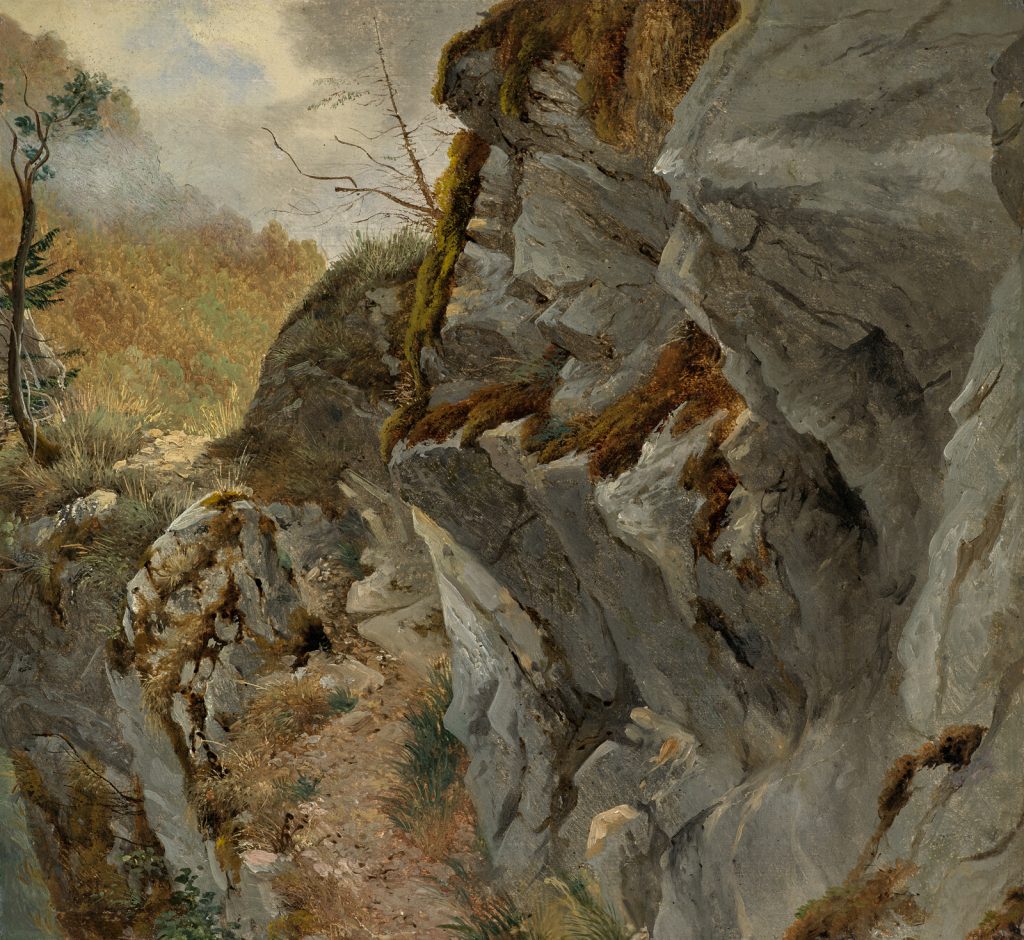Alexandre Calame
(Vevey, Switzerland 1810 - 1864 Menton)
Rocky Path, Switzerland, c.1850
Oil on paper, laid down on cardboard, 25 x 27.5 cm
Provenance:
Edwin Lüscher, Seengen;
Asbjørn Lunde (1927-2017), New York, from 2009, inv. 551.
Exhibited:
Forests, Rocks, Torrents: Norwegian and Swiss Landscapes from the Lunde Collection, London, National Gallery, 2011, no. 41;
The Rockies and the Alps. Bierstadt, Calame, and the Romance of the Mountains, Newark Museum, March 24-August 19, 2018, no. 33.
Literature:
Valentina Anker, Alexandre Calame: Vie et oeuvre, Catalogue raisonné de l’oeuvre peint, Fribourg 1987, p. 398, no. 454, repr.
The mountains and lakes of Switzerland were Alexandre Calame’s preferred motifs. Alpine imagery played a central role in Swiss nineteenth-century landscape painting. Not only was it consistent with the Romantic conception of nature but it served increasingly to nurture the image of a developing nation. Calame explored large tracts of the mountains on foot in search of the best views of unspoiled nature. He was often accompanied on his trips by pupils, among them the Lucerne painter Robert Zünd. Later, failing health compelled Calame to restrict his walking to less demanding routes and to choose motifs at lower altitudes.

